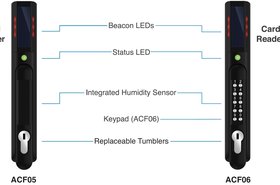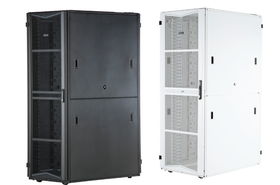The world’s near-insatiable demand for energy, combined with failures to properly invest in grid infrastructure and power generation, has increased the challenges facing the data center industry.
On top of this, the net-zero drive and operators’ pledges to power data centers with renewables means that many now rely on energy matching tools in order to keep their promises. That’s because 24x7 renewable energy use, 100 percent of the time, requires sourcing power from various different producers, including wind and solar, neither of which can guarantee constant supply.
Data center failures as a result of outages demonstrate that when the power goes off unexpectedly, and backup processes fall short, the results can be catastrophic. But understanding the key variables and specific goals for individual data center operators or customer requirements will provide a clear decision-making process to guard against the organization grinding to a halt due to a power outage.
Uninterruptible power supplies (UPS) are one of the key elements in any environment where continuous power to electrical equipment, including IT equipment, is mission critical.
According to MarketWatch, between 2019 and 2025 the UPS market is set to increase to $13 billion, a CAGR of 3.98 percent. Even countries such as the UK, which have highly secure energy grids, will experience occasional major power failures, such as the National Grid outage in 2019, or this one in London in March 2022, caused by an electrical substation fire.
Backup for a future
Backup electrical generation or storage systems, diesel generators and battery UPS are the main means of keeping the business running when power unexpectedly fails. UPS provide the short-term power to essential systems to ensure data or processes can continue to operate, while the backup generator sets power up to offer longer-term energy supply to the facility.
The time between utility power failure and the IT load transitioning to the UPS is critical and every millisecond counts. Power interruption longer than just 20ms will probably result in an IT systems crash, while a power break of up to 60 seconds will result in an ITE restart process, which will seriously affect data center operations and customers’ applications. A lengthy outage may also incur customer penalties and reputational damage for the data center operator.
According to Uptime Institute’s 2021 Outage Analysis report,“44 percent of data center operators surveyed, and 59 percent of suppliers/vendors, think that concern about resiliency of data center/mission critical IT has increased in the past 12 months.”
Improvements in UPS technology have enhanced their capabilities. Rapid development of higher speed processors and storage at the server is also changing backup power requirements, although IT applications’ resilience and customers’ risk tolerance will dictate the capabilities of the UPS. Therefore, the data center or customer must clearly understand their needs before deciding on a UPS platform.
Hyperscale data center applications are designed so that only one or two minutes of battery runtime is needed before backup generators kick-in, while colocation sites typically require five minutes of runtime. In the financial markets, however, where even a small number of dropped trades could cost hundreds of thousands of pounds, it is typical to specify between 10 and 15 minutes for UPS runtime. Not surprisingly, the longer the runtime required, the larger the investment in UPS, both in terms of initial cost and ongoing expenses.
In enterprise or Edge computing environments, where generators may be unavailable, more time to safely and securely shutdown servers and other equipment might be a critical requirement, and will therefore affect selection. However, over-provision of UPS capable of providing extended runtimes, where backup generators are available, could be an unnecessary capital cost and an additional on-going expense that contributes to reduced profitability.
Critical IT load support
It is essential to select UPS suitable for the IT load they are intended to support, and to revisit this on a regular basis. Primary concerns are the IT equipment running critical loads, but for higher speed processors generating more heat at the server, UPS for the cooling systems for those servers is also critical.
With that in mind, another key factor in the process is the UPS ‘unity power factor’. The latest UPS have a unity power factor of one. That means, for example, that today’s modular capabilities enable a customer’s 100kW IT load to be supported either by five 20kVA UPS, or a single 100kVA UPS, depending on the preferred configuration.
However, not all UPS are made equal. There are still UPS available with unity power factors of less than 1.0, possibly down to 0.8, which affects the UPS requirement for the critical load supported.
Modular UPS components are a solution in this situation when combining legacy UPS products in an environment that is upgrading to higher power rated ITE racks. The modular capability of these systems allows for the additional UPS kVA to match the upgraded rack kW, reducing overall cost and improving energy efficiency.
Lithium-ion batteries are now clearly established in the market and will deliver more capabilities to users as the technology becomes embedded within the key applications. Compared to lead-acid, Li-ion batteries offer longer lifecycles, reduced weight, a more compact footprint, and lower cooling requirements, which makes it especially advantageous for smaller data centers and edge environments.
Indeed, the extra capacity, extra life and cooler running may even enable organizations to eliminate the need for separate battery rooms offering greater space utilization.
However, for the time being, the latest UPS deliver increased efficiency, reliable power protection and backup power for computer IT and other critical equipment. Modular systems also enable hot swapping, providing the platform for both faster maintenance, and the removal of old or faulty individual units as and when required to ensure optimum capacity and immediate power.
To continually meet the growing backup power demands of data center, enterprise, and Edge IT equipment, the latest UPS provide excellent electrical performance, intelligent battery management, enhanced intelligent monitoring, secure networking functions and long lifespan for lithium units.
Integration with cloud-based DCIM solutions, such as Panduit’s SmartZone™, provide support for management, monitoring, control and alerting across the wider environment. This includes power chain, environmental, cooling, security, IT assets (both physical and logical) and connectivity infrastructure. Changing technology invariably creates challenges to reduce outages, but the UPS remains a critical element in data center best practice.
More from Panduit
-

Sponsored SmartZone G5 Security Handle offers secure dual authentication
Panduit's G5 smart handle offers multiple configurations with and without a keypad to compliment users’ operational requirements
-

Sponsored Panduit launches new generation FlexFusion™ cabinets
A new generation cabinet that offers unparalleled customisation possibilities to suit all needs
-

Sponsored Simplifying data center logistics with preconfigured infrastructure
Preconfigured infrastructure solutions proven to streamline the procurement process - and reduce deployment time by up to 80 percent

